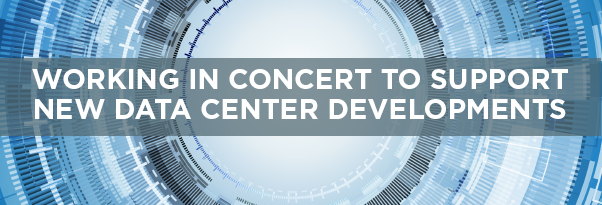
By Chris Curtis
Environmental stewardship is at the forefront of all local and state regulations and development decisions – as it should be. It tops the list of priorities for data center developers and operators, too, but that fact flies a bit under the radar on the local level. Sustainability is a business priority that needs to become a communications imperative to support the industry’s continued growth.
BAD NEWS GETS RATINGS AND SELLS PAPERS
A decade ago, The New York Times released an exposé-style article depicting the potential negative effects of data centers on the environment. One sentence from this Sept. 22, 2012 article titled “Power, Pollution and the Internet” sums it up nicely, “A yearlong examination by The New York Times has revealed that this foundation of the information industry is sharply at odds with its image of sleek efficiency and environmental friendliness.”
It goes on to detail a host of harrowing claims such as:
Hundreds of reader comments ensued. There were a few letters to the editor in defense of data centers following this scathing rebuke, but nothing packs a punch like a year-long “investigation” and front-page news. It was a big reputational hit early in the industry’s unfolding.
TURNING THE TIDE
If a top-tier news outlet has written an article heralding advancements made by the data center industry to protect the environment, we haven’t seen it. The New York Times article seemed to spur community leaders, everyday citizens, regulators and government officials toward predisposition to resist new data center developments, regardless of environmental accomplishments and site-specific commitments. This was a turning point where onerous restrictions became mainstream and site selection and project development became infinitely more complex.
Our industry’s impact on the environment is a critical issue, and one that data centers and all 7×24, critical infrastructure providers take extremely seriously. We have a shared goal of creating and maintaining a more sustainable future. Environmental concern and commitment guide the way we design, construct and operate data centers. Yet, the fear narrative looms large and is a consistent, shared obstacle faced when it comes to developing new projects.
So, how do we share the advances our industry has made with respect to sustainable, environmentally neutral operations? One key is, singing from the same song sheet.
OUR HYMN
We wouldn’t complain if a top-tier news outlet wanted to write a lengthy, front page article on how the data center industry has spurred massive investments in renewable power generation; how seldom back up power is tested or used and the move toward lithium-ion batteries to minimize use of diesel-powered backup generators; or how the airside cooling systems available now mean no water is wasted. But it hasn’t happened.
In addition to talking about those technical advancements that benefit the environment, we can build greater awareness of the upsides by consistently balancing the narrative and seeding positive messages about our industry’s contributions toward a carbon neutral future. Consistent communication is key to being heard and we have plenty to croon about.
Virtual capability contributes to lower carbon emissions
The pandemic changed everything. We will henceforth rely infinitely more on virtual meetings, streaming entertainment and digital learning tools. If the events of 2020 weren’t enough to reinforce the significant role of technology in our businesses and schools, the delta, lambda and omicron variants of COVID-19 underscore the ongoing need for connectivity at the drop of hat.
While it’s been tough for the travel and hospitality industries, all of the many meetings gone virtual equates to significantly less carbon emitted by planes, trains and automobiles. A comprehensive new survey of the effects of the pandemic on the atmosphere, using satellite data from NASA and other international space agencies, revealed that:
All of the virtual work and entertainment our society tapped into over the past two years would not have been possible without healthy and robust data streams.
A boon to renewable energy development
Most data centers have moved to exclusive use of renewable energy, delivering the large-scale, ongoing contracts needed to build more renewable generation capacity, and invest in renewable power storage solutions and grid improvements. This industry has driven the demand needed to expand green energy solutions and capacity.
Localized benefits
Data centers aren’t 25-story, hulking buildings with throngs of workers creating congested city streets. While the acreage can be significant, it’s usually a low-rise building in a far-flung place that is visually unobtrusive. Developers today are making impressive commitments to protect, improve and enhance areas around campuses by protecting or improving wildlife habitats, building hike and bike trails, planting pollinator plants to support growing bee populations, and improving water treatment and storm water drainage to fortify cities against extreme weather.
In addition, the tax revenue a data center can bring to the city offers the potential to meet city needs without raising taxes for its citizens. In 2019, data centers contributed more than a
quarter billion dollars in tax revenue in Loudoun County , a U.S. data center hub.
On the unseen side, investments in power and fiber optic networks are a huge benefit to local residents. Bandwidth and the ability to serve growing data infrastructure needs also makes it possible to attract larger employers in search of new markets to establish operations.
These mission-critical facilities are not a threat to the environment. They’re enablers with real, significant benefits to communities and the environment, addressing the needs of our rapidly evolving world in an environmentally responsible way. There are a lot of reasons to welcome data center development done right.
Data centers will continue to play a key role in our future, providing the foundation for the data driven capabilities and applications changing the way we work, learn and communicate. Let’s see if we can’t chip away at negative perceptions by being more vocal and consistent, and break down some barriers to responsible data infrastructure development in the process.
Chris Curtis is Senior Vice President of Development & Acquisitions at Compass Datacenters. He can be reached at [email protected]..